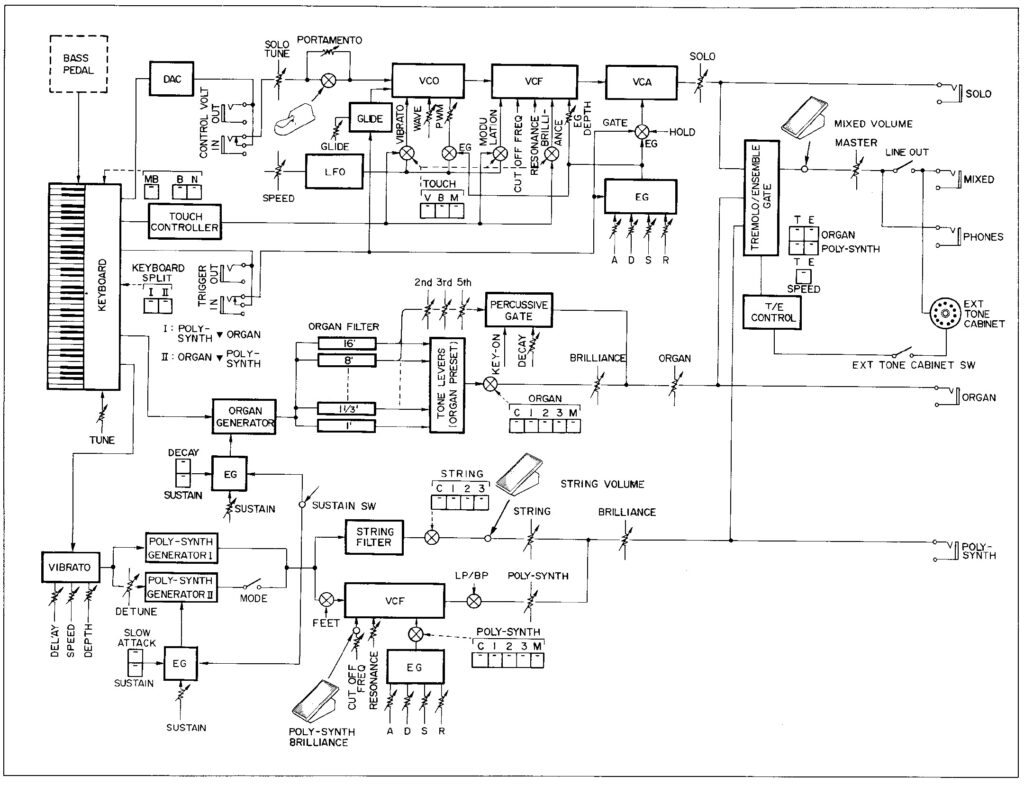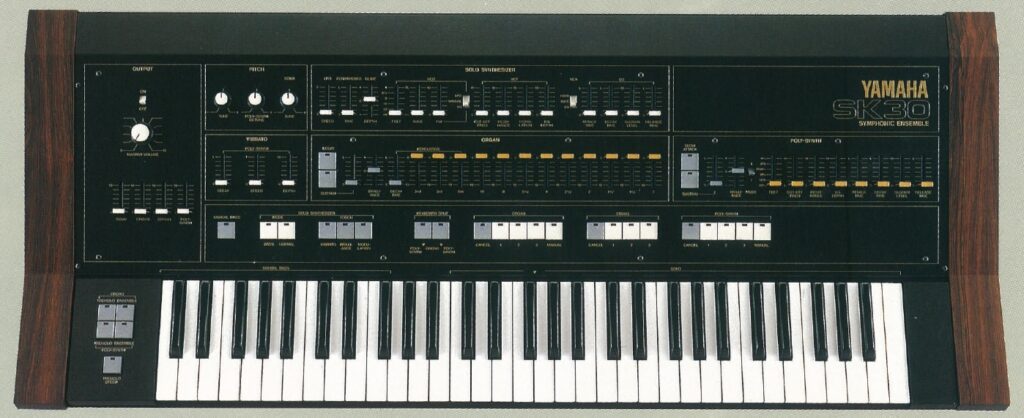Got a PM from Jan, a long-time reader. Jan found a page on YamahaSynth about the Yamaha MX product line. The page features the phrase “CK — Classic Keyboards”. CK?
I suspect that CK61™ and CK88™ refer to a new line of keyboards, not a refresh of the MX series. I have to agree that the MX product line is in serious need of a refresh; It is based on the geriatric Yamaha Motif XS sound set.
Still, Jan’s comments got me thinking, especially about the early history of Yamaha synths.
The earliest Yamaha synths — SY-1 and SY-2 — Appeared in the mid-1970s. These 3-octave beasts provided a range of factory presets like trumpet, clarinet, guitar, piano, etc. and a small handful of sliders and knobs on a panel to the left of the keybed.
The SY-1 and SY-2 were quickly superceded by the more popular CS series. The CS series had monophonic and polyphonic models covering the range from the highly portable CS-01, through the Concertmate-like CS-5, to the revered altar of synthesis, the CS-80. The CS synths appeared in the late-70s and early-80s.
The Yamaha SK series appeared in roughly the same time-frame and were somewhat eclipsed by the CS synths. I remember playing both CS and SK keyboards in Salt Lake City, wearing out my welcome at local music shops around town. 🙂
Like the beefier end of the CS line, the SK keyboards sported beautiful — and heavy — wooden end-cheeks and cases. Yamaha have always found a way to spotlight their expertise in woodworking!
Sonically, the SK series are an extension of digital organ technology. The SK-30, for example, had three independent sound generators: organ, poly synth and solo synth. The organ has footage tab stops and percussion. The poly synth is split into two subsections: string and poly synth. Each section is 7-note paraphonic. The monophonic solo synth consists of a VCO feeding a wave-shaper that sends a sawtooth or pulse into the VCF and VCA stages. The organ and poly synth sections each have their own timbre shaping circuitry akin to the tone shaping one finds in organ designs of the era.
Why two concurrent product lines, both ostensibly synthesizers? Engineers were fighting analog VCO pitch stability at that time. The SK series had better pitch stability overall than the CS series and offered polyphony to boot. Who knew that analog would be more popular than digital?
So, what if the CS series and the SK series had a baby? “C” from the “CS” series plus “K” from the “SK” series equals “CK”. Yamaha have been known to dip from their historic well for naming. Perhaps the new CK series are a poly/mono hybrid? Just guessing!
TMI
Looking at the service manuals for this old tech is a blast down memory lane. The SK series use several Yamaha proprietary chips from their electronic organ and CS synthesizer product lines.
A number of on-line resources claim that the poly-synth tone generators use FM synthesis. This is incorrect. Specifically, the poly-synth uses YM70400 GOA integrated circuits (IC) based on Yamaha’s Pulse Analog Synthesis System (PASS). The YM70400 (and the other tone generators) receive a serial 4-bit key code from a key scanner/assigner IC. The key codes tell the tone generator(s) which notes to produce and trigger. The SK-30 has dual poly-synth generators which are each 7-note polyphonic, producing 8’/16′ square waves and 4′ sawtooth waves. Each side is routed through analog filters tailored for strings on one side and an EG-controlled VCF on the poly synth side.

The SK-30 organ section consists of a YM62200 top-octave tone generator (TGC) and two YM70200 organ generators, GF1 and GF2. The organ section is 7-note polyphonic. GF1 and GF2 generate sine waves which are sent through the drawbar tabs for mixing and filtering. GF1 and GF2 support all common organ footages and percussion.
All three sections can take advantage of a tremolo/ensemble effect and/or a multi-pin Leslie connector. The effect is a bucket brigade device (BBD) delay/vibrato generator. [The term “Tremolo” is abused here.]
Much is described in the excellent article “Yamaha Symphonic Ensemble SK20”, Electronics & Music Maker, March 1981. Back in the day, electronic music magazines occasionally gave a detailed glimpse inside — sadly lacking in today’s review articles. sandsoftwaresound.net tries to fill that void.
Copyright © 2022 Paul J. Drongowski

